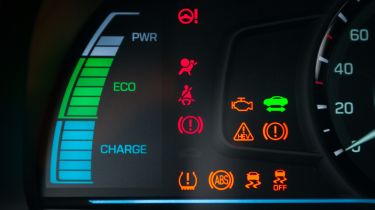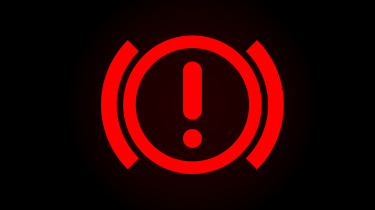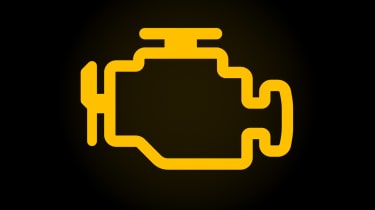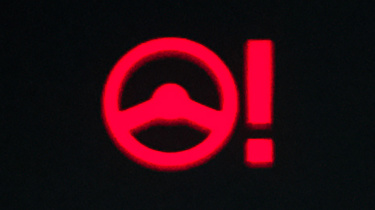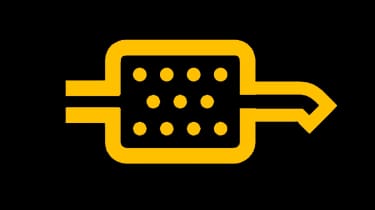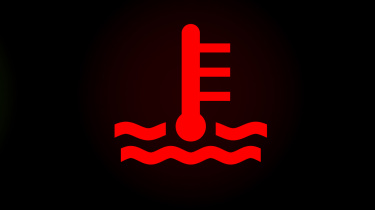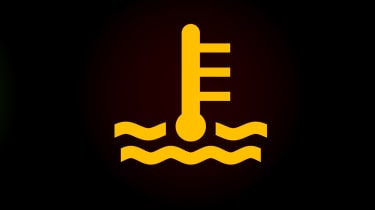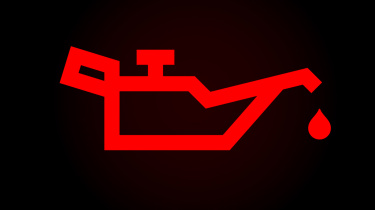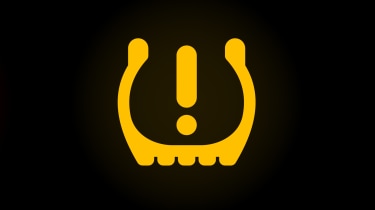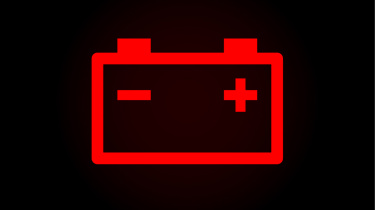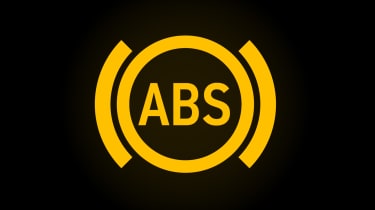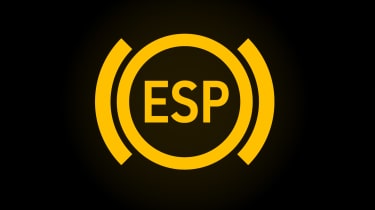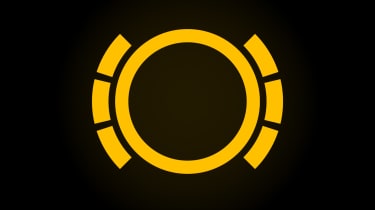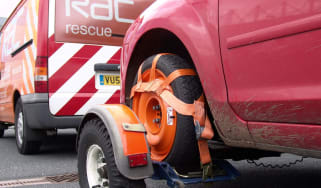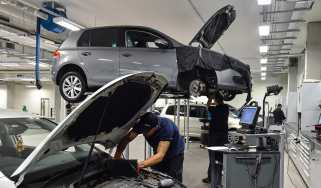What do dashboard warning lights mean?
Dashboard lights can be a costly thing to ignore, so we explain what they all mean
Having a dashboard warning light appear in your car can be a nerve-wracking experience, and this feeling of dread will only get worse if you don’t know what the light actually means. While staying on top of maintenance and servicing will help to keep some dashboard warning lights at bay, others may still appear with very little warning.
No need to fret, though, because we’re here to explain everything you need to know about dashboard warning lights and what they mean.
What do warning lights mean on the car dashboard?
If a warning light appears on your dashboard, your car’s on-board systems have detected a problem, and these can vary in severity. In most cases, these warning lights are colour-coded and the general key is as follows:
- Yellow: A non-critical fault has occurred but it will require attention as soon as possible. In most cases you’ll still be able to drive home or to a garage.
- Red: A major issue has arisen and the car needs to be stopped and switched off as soon as it’s possible to do so safely, otherwise serious damage or a dangerous incident could occur.
- Blue or green: On some more modern cars, especially hybrids and electric cars, you may spot a blue or green light on your dashboard. There’s no need to worry about these lights, though, as they simply indicate that the relevant system is functioning as it should be.
Different warning lights
There are quite a few dashboard warning lights in existence, but not all cars are fitted with every single one. The lights that are fitted to your car will depend largely on its powertrain type and whether or not it’s fitted with more advanced safety systems. Here we explain the most common dashboard warning lights and their meanings. Once you’ve read our guide, you may also find a more specific overview of the lights in your car within your owner’s handbook.
Brake warning light
The cause: The brake warning light takes on more than one meaning. A solid red light when your handbrake (also known as parking brake) is applied simply acts as a reminder to not drive off until you’ve disengaged the brake. However, if this light appears when you’re on the move and the handbrake is off, this indicates a fault with your braking system. In most cases, the light will flash when a fault has been detected.
There are several potential causes of a brake malfunction, such as defective Anti-lock braking sensors or low brake fluid.
What to do: Obviously, you don’t want to be driving a car with faulty brakes, so you should stop as soon as possible and have the vehicle recovered. Do not use it again until the issue has been diagnosed and repaired by a professional.
Engine management light
The cause: The engine management light acts as something of a general warning when your car’s on-board computer has detected a fault. While many of these faults are indeed to do with the engine itself, they can also involve additional components such as sensors. The only way to determine the exact fault is to have a professional diagnosis carried out on the car.
What to do: If this light is yellow, the car may still be drivable for a short distance. If it is red, though, you will need to stop immediately in order to prevent serious damage. The best course of action will depend on the fault that’s causing the engine management light to come on in the first place. Some issues may result in poor running or even a breakdown, so if you feel like your car feels like it’s struggling or has conked out completely, stop and arrange for breakdown recovery. If the problem is less serious, most modern cars will engage ‘limp mode’ which greatly restricts the engine’s performance in order to prevent further damage. This mode will allow you to continue driving for a short distance in order to reach your home or a garage.
Airbag warning light
The cause: While the most obvious cause of an airbag warning light is when the car has detected a problem with one of the airbags, the issue could also lie with the occupant classification system (this detects when a person is sitting in a seat), or even the seatbelt pre-tensioning system which tugs the seatbelts tight in the event of a collision.
What to do: Any fault could prevent the airbags from functioning correctly in the event of a crash, so it’s crucial to get a professional to resolve this as soon as possible. Airbags can be extremely dangerous, so do not attempt to investigate the issue yourself.
Power steering warning light
The cause: If your car’s power steering system fails, you’ll notice this by the sudden heaviness of the steering as well as the light on the dashboard. While the car may still be drivable, manoeuvres at lower speeds could prove very difficult because you’ll face a far greater amount of resistance when turning the wheel. The fault may vary depending on whether your car has a hydraulic or electronic power steering system, but the most common cause is a failed pump or motor.
What to do: While the car may still be drivable with a failed power steering system, it’ll be difficult to turn the wheel quickly. This means emergency manoeuvres may prove dangerously difficult, so the safest option is to pull over and call for recovery.
Diesel particulate filter warning light
The cause: Modern diesel cars are fitted with a particulate filter in order to help reduce harmful emissions, however these filters can become clogged — especially if the car is only used for short or occasional journeys.
What to do: In some instances, a long drive while keeping the engine within a higher rev range can clear a less severe blockage, but a professional repair may be necessary if the clog is more severe.
Engine temperature warning light
The cause: If your engine exceeds its optimal operating temperature, this overheating can potentially cause significant damage to a car’s mechanical components. One of the more common causes of overheating is a shortage of coolant.
What to do: Whatever the cause, it’s best to stop the car and switch the engine off as soon as possible. If you’re to check your coolant level, do not attempt to touch any mechanical components until they have cooled down, otherwise you could be severely burned. If the coolant level appears normal, the overheating could be the result of a mechanical failure instead.
Coolant level warning light
The cause: This is a simple one, but some cars will alert you if your radiator coolant level drops too low.
What to do: In order to prevent the engine from overheating, it is strongly advised that you switch off the engine, allow it to cool, and top up your coolant as soon as possible. If you’re unsure how to refill your coolant or which type of coolant to use, consult a professional. Never attempt to remove a coolant reservoir or radiator cap when the engine is hot, because the system will be pressurised and you stand a good chance of being scalded.
Oil warning light
The cause: Combustion engines have plenty of moving parts, and these parts need to be kept well lubricated in order to prevent friction or major damage. It’s always good practice to manually check your oil level on a regular basis, but if it drops too low, the oil warning light should appear on your dashboard. It’s important to never rely on this light to tell you when to top up, as engine damage may have already occurred if it has been triggered in the first place. The dipstick is your best friend when it comes to oil maintenance.
What to do: Stop the engine as soon as it is safe to do so. Once you are safely stopped, let the oil settle in the engine (this takes around 10 minutes), then perform an oil level check to see how low it actually is. If the level is empty or severely low, do not restart the engine. Instead, either top up the oil or call for recovery. If the manual oil level check appears normal, the fault could be a faulty sensor. However, remain cautious as an oil-free engine would be a disaster. If you’re not certain of what you’re doing, consult a professional.
Low tyre pressure warning light
The cause: If your car has a Tyre Pressure Monitoring System (TPMS), each wheel has a sensor fitted that monitors the air within the tyre. If one or more of your tyres loses too much air, this warning light will show.
What to do: This light could simply require a visit to a nearby inflator to top up a tyre’s air pressure, or it could indicate a complete puncture which requires replacement rubber. The light may also appear if one or more of the TPMS sensors have failed. A visual inspection of your tyres should quickly reveal which problem your car has. If you have a flat and are unable to use a puncture repair kit or fit a spare wheel yourself, make sure you are somewhere safe and then call for recovery.
Battery warning light
The cause: 12V car batteries are perishable items, and they will wear out over time. If your car detects that it isn’t receiving the optimal amount of power from its battery, this light will make an appearance. If your battery is particularly low on charge, the car could start to run rough or even cut out altogether, so it’s inadvisable to undertake a long journey until the problem has been rectified. It’s also worth noting that a faulty alternator can cause a completely healthy battery to lose charge, so a professional diagnosis may be in order.
What to do: While a replacement battery would appear to be the obvious solution here, this could soon fail again if the problem actually lies with the alternator or another electronic component. If your car is still running, you may be able to drive it home or to a garage. If it dies completely, though, you can attempt a jump start or (if that fails or you’re unable to do so) call your breakdown provider or mechanic, who should be able to fully diagnose the problem.
Anti-lock brake system (ABS) warning light
The cause: Much like the TPMS system mentioned above, ABS systems rely on wheel-mounted sensors to detect when the brakes are about to lock up. There is also a dedicated computer and pump that will kick in when this system is activated during heavy braking. If one of these components fails, this light will show.
What to do: If the ABS system has failed, you will still be able to drive as normal, however emergency stops will potentially be far more dangerous as you’re at greater risk of the wheels locking up. Due to this increased risk, it’s best not to drive the car until the problem has been professionally repaired.
Electronic stability program (ESP) warning light
The cause: Your car’s Electronic Stability Program (ESP) — also known as Electronic Stability Control (ESC) — is a feature that works in the background alongside the traction control and anti-lock braking systems to keep your car under control when slowing down. If any component in this system fails, it could make it much more difficult to stop safely during an emergency. Not only will this warning light show solidly if a fault has occurred, but it will also show if the system has been manually switched off. If the light flashes, your ESP system has kicked in to keep the car from skidding.
What to do: Much like ABS system failure, an ESP fault can also increase the risk posed when faced with an emergency. Because of this, it’s not advisable to drive a car while its ESP warning light is illuminated. A professional diagnostic scan of the car will be required in order to determine the problem.
Brake pad warning light
The cause: Worn-out brake pads are bad news, so a number of modern cars have a warning light which will alert you when it’s time to fit a fresh set. Alongside this warning light, your pads should also have an audible warning. If you hear a rather unpleasant squeaking or squealing sound when braking, it may also be time for fresh pads, even if the light hasn’t yet made an appearance.
What to do: This one is self-explanatory, but all you need to do is have your car’s brake pads replaced as soon as possible.
How to reset warning lights
The process for resetting warning lights will depend on which light is showing and the fault that is causing it. Many of these lights will also result in a fault code being uploaded to the car’s on-board computer (ECU), and these will require a professional diagnostic scanning tool in order to clear both the code and the light.
If you’ve taken your car to a professional technician for repair, they will be able to reset the light for you. If the light reappears soon after any repairs, be sure to flag this with your chosen mechanic or garage immediately.
In some less severe cases, such as low fuel, low tyre pressure or a failing battery, a simple top-up or replacement of the affected part can be enough to reset the light.
Frequently Asked Questions
In most cases, red dashboard warning lights are considered the most dangerous. Brake failure, low oil, overheating and serious engine faults are just some issues that can cause truly catastrophic damage, but no warning light should ever be disregarded, regardless of its colour.

